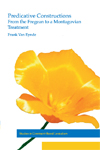

|
|
|
|

Predicative ConstructionsFrom the Fregean to a Montagovian Treatment Predicative constructions are ubiquitous. A recent count in a Dutch corpus revealed that one in four sentences contains at least one predicative construction. It is no surprise then that they have drawn a lot of attention, both in linguistics and in logic. Most of the existing treatments in generative grammar—transformational as well as monostratal—stress the differences between predicative and transitive constructions, and assume that the former show a discrepancy between syntactic and semantic structure. This is in line with the Frege-Russell Treatment of predicative constructions in logic, but it leads to a number of problems, especially for the analysis of nominal, infinitival, gerundial and clausal predicative complements. As an alternative, Frank Van Eynde develops a treatment in line with the Quine-Montague analysis of the English copula. It is based on the assumption that the syntactic and semantic structure of predicative constructions are homomorphous and it is cast in the Typed Feature Structure of Head-Driven Phrase Structure Grammar. Since this approach is new, it is motivated extensively, not only with the classical qualitative weighing of pros and cons but also with detailed quantitative investigations of treebanks. is Professor of Linguistics at the University of Leuven, Belgium. Contents
May 2015 ISBN (Paperback): 1575868377 (9781575868370)
|
Distributed by the
University of Chicago Press |
|
pubs @ csli.stanford.edu
|
CSLI Publications
Stanford University Cordura Hall 210 Panama Street Stanford, CA 94305-4101 (650) 723-1839 |